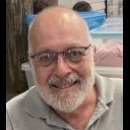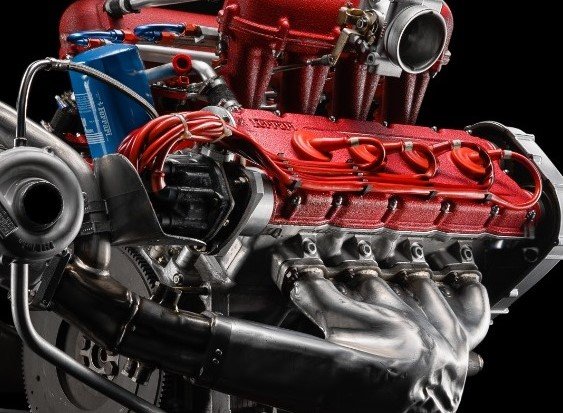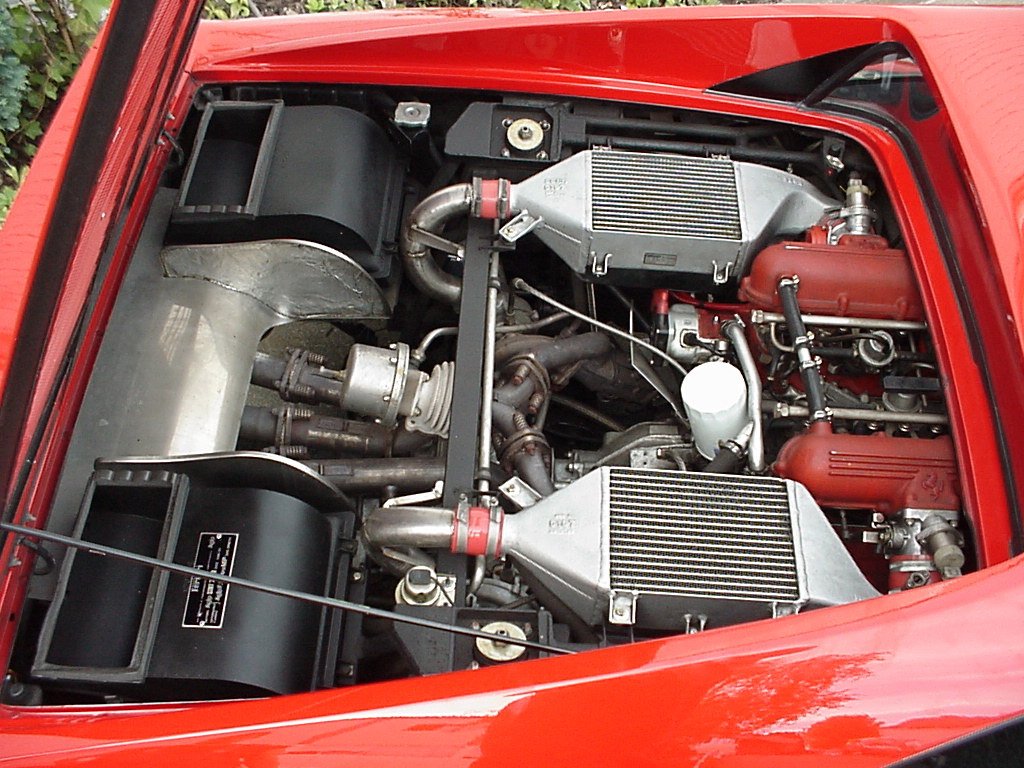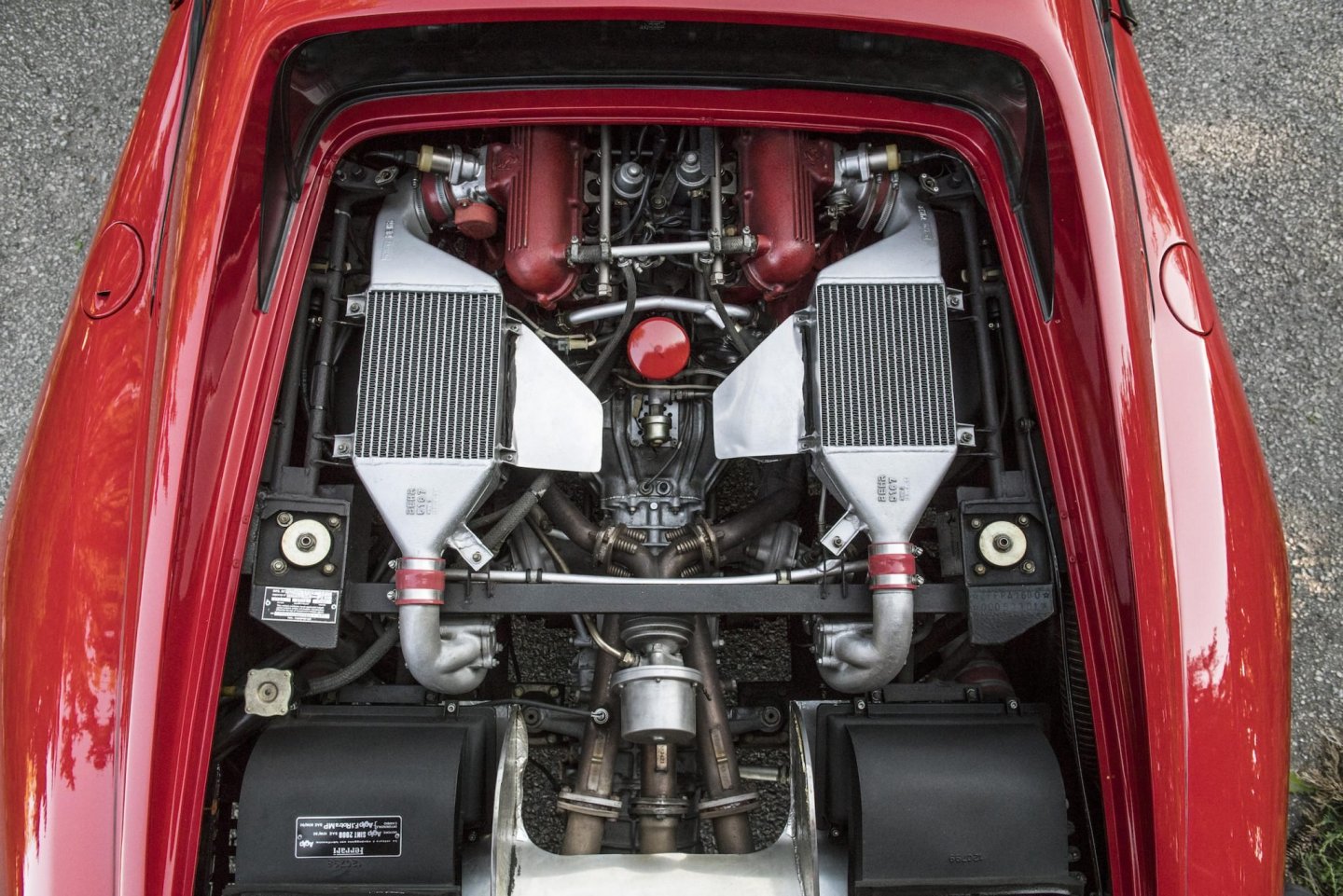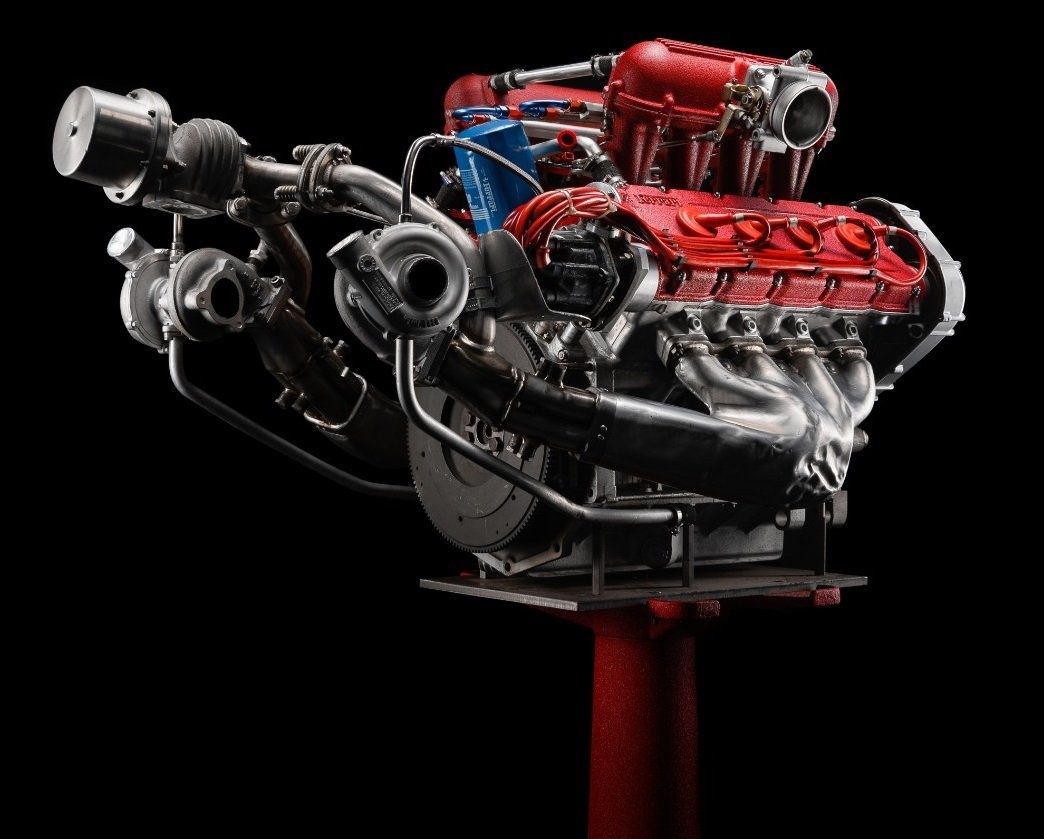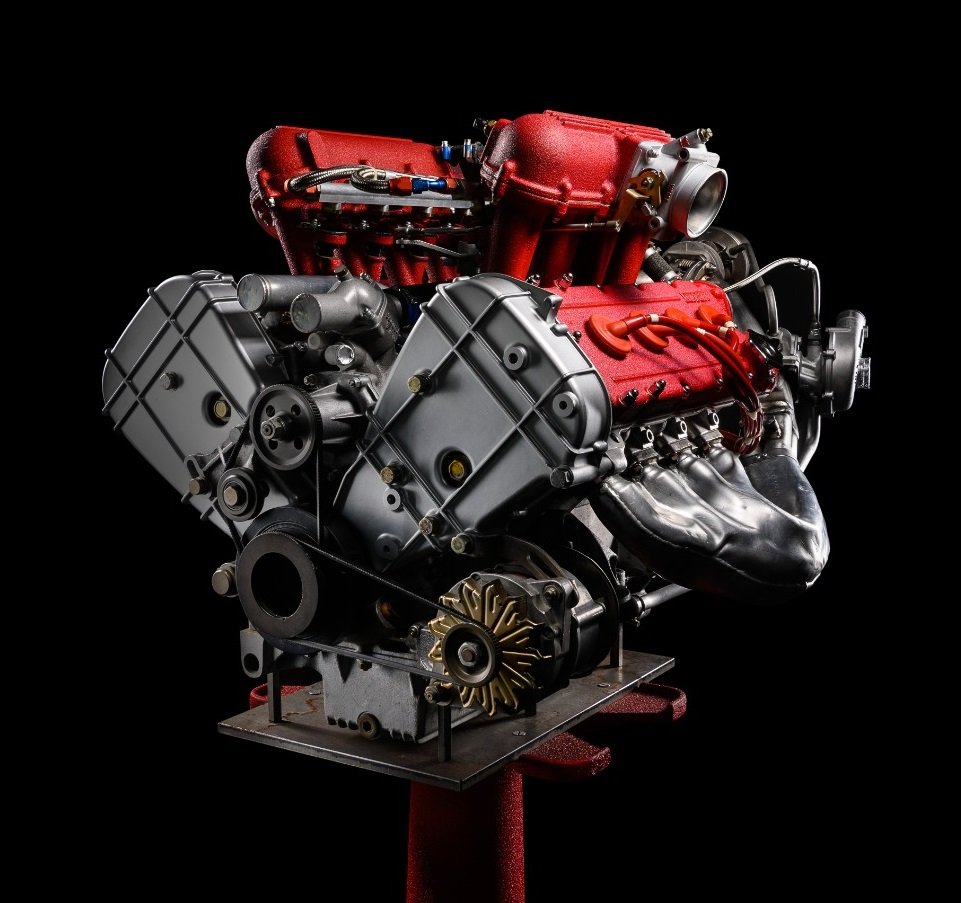-
Posts
7,142 -
Joined
-
Last visited
About CDW

- Birthday 04/16/1954
Profile Information
-
Gender
Male
-
Location
Tampa, Florida
-
Interests
Scale model building of all types; American and world history; science; religious studies; flight; grandchildren; travel; antique car and motorcycle restoration
Recent Profile Visitors
-
 Old Collingwood reacted to a post in a topic:
Ferrari 288 GTO Yellow by CDW - Fujimi Enthusiast Series - 1:24 Scale
Old Collingwood reacted to a post in a topic:
Ferrari 288 GTO Yellow by CDW - Fujimi Enthusiast Series - 1:24 Scale
-
 davec reacted to a post in a topic:
Ferrari 288 GTO Yellow by CDW - Fujimi Enthusiast Series - 1:24 Scale
davec reacted to a post in a topic:
Ferrari 288 GTO Yellow by CDW - Fujimi Enthusiast Series - 1:24 Scale
-
 davec reacted to a post in a topic:
Ferrari 288 GTO Yellow by CDW - Fujimi Enthusiast Series - 1:24 Scale
davec reacted to a post in a topic:
Ferrari 288 GTO Yellow by CDW - Fujimi Enthusiast Series - 1:24 Scale
-
 davec reacted to a post in a topic:
Ferrari 288 GTO Yellow by CDW - Fujimi Enthusiast Series - 1:24 Scale
davec reacted to a post in a topic:
Ferrari 288 GTO Yellow by CDW - Fujimi Enthusiast Series - 1:24 Scale
-
 davec reacted to a post in a topic:
Ferrari 288 GTO Yellow by CDW - Fujimi Enthusiast Series - 1:24 Scale
davec reacted to a post in a topic:
Ferrari 288 GTO Yellow by CDW - Fujimi Enthusiast Series - 1:24 Scale
-
 davec reacted to a post in a topic:
Ferrari 288 GTO Yellow by CDW - Fujimi Enthusiast Series - 1:24 Scale
davec reacted to a post in a topic:
Ferrari 288 GTO Yellow by CDW - Fujimi Enthusiast Series - 1:24 Scale
-
 Egilman reacted to a post in a topic:
Ferrari 288 GTO Yellow by CDW - Fujimi Enthusiast Series - 1:24 Scale
Egilman reacted to a post in a topic:
Ferrari 288 GTO Yellow by CDW - Fujimi Enthusiast Series - 1:24 Scale
-
 Egilman reacted to a post in a topic:
Ferrari 288 GTO Yellow by CDW - Fujimi Enthusiast Series - 1:24 Scale
Egilman reacted to a post in a topic:
Ferrari 288 GTO Yellow by CDW - Fujimi Enthusiast Series - 1:24 Scale
-
 Egilman reacted to a post in a topic:
Ferrari 288 GTO Yellow by CDW - Fujimi Enthusiast Series - 1:24 Scale
Egilman reacted to a post in a topic:
Ferrari 288 GTO Yellow by CDW - Fujimi Enthusiast Series - 1:24 Scale
-
Alright OC...this is so you get your 'picture-fix' before going to bed tonight. The gray breather boxes sit dry-fitted, the yellow piece also dry-fitted needs to be painted aluminum and need the scratch-built vertical wings on each side before being cemented in place. The four exhaust pipes can be seen exiting from the rear awaiting their aluminum exhaust tips. Nighty-nite, sleep tite and talk at 'ya later.
-
 Old Collingwood reacted to a post in a topic:
Ferrari 288 GTO Yellow by CDW - Fujimi Enthusiast Series - 1:24 Scale
Old Collingwood reacted to a post in a topic:
Ferrari 288 GTO Yellow by CDW - Fujimi Enthusiast Series - 1:24 Scale
-
I'm building out the remainder of the engine compartment. The kit provides most of the detail seen in the photograph but not all. The two dark gray boxes at the rear of the compartment are breathers for the turbochargers. These are included. The aluminum plate notated in the photo is also included, but strangely, the two rounded vertical plates are not included and need to be scratch built. Not a big deal to make a couple but just a note for your future interest if you build the model yourself. Some of the smaller details seen in the photo but are not included in the kit, I'll need to decide whether I will or will not take time to add from scratch.
-
The rear suspension and disk brakes are another area where you will want to take your time, be patient, and work the fit to get it right. It's a little fiddly to get all the parts in place at the same time, but that's what you'll need to do to get a good fit at the glue joints. On assemblies like this, I use the Model Master cement shown in the photos as it has a slower setup time, a precise applicator tube and allows superior control of the amount of cement and location of the same. Unfortunately, this particular product is no longer in production, and I am working on my last bottle of it here. In the future, I will go back to my old standby cement, Faller Expert. It can be found on Amazon if you're interested. As an FYI, I painted the disk rotors and hubs with AK Super Chrome, the calipers with Tamiya titanium gold. The control arms, transaxles in satin black with rubber color boots. The shocks are red with black springs. One of the fuel cells became the first casualty of removing the chassis from the tight fit inside the body. I've made a decision to assemble the remainder of the parts with the chassis outside the body as there is so little space to work the parts into position once the chassis is mounted inside the body. The fuel cell has been repaired. 🙂
-
@gsdpic Something I failed to mention: the instructions show an option to cut open the headlamp covers on the car body as the headlamps on this Ferrari are retractable. However, there are no further instructions to show the parts or part numbers for building out the headlamp buckets once the covers have been cut from the body. This presents no problem for me as I have no intention of building the model with the headlamps in the opened position as I prefer the clean lines of the closed position. There may or may not be parts on the parts trees for building out headlamp buckets, I am not certain. Just a heads-up so you won't get caught unaware.
-
 CDW reacted to a post in a topic:
Ferrari 288 GTO Yellow by CDW - Fujimi Enthusiast Series - 1:24 Scale
CDW reacted to a post in a topic:
Ferrari 288 GTO Yellow by CDW - Fujimi Enthusiast Series - 1:24 Scale
-
 CDW reacted to a post in a topic:
Ferrari 288 GTO Yellow by CDW - Fujimi Enthusiast Series - 1:24 Scale
CDW reacted to a post in a topic:
Ferrari 288 GTO Yellow by CDW - Fujimi Enthusiast Series - 1:24 Scale
-
At this stage of the game, it's time to begin test-fitting major components such as the body to chassis fit with the engine and tranny in place. I don't want to get a surprise with fit issues after it's too far along to make adjustments if necessary. While it's a very tight fit, as it should be, it's a precise fit and one I'm happy with at this time. As you will see, it's going to be a very detail-rich model with all the features of the 1:1 car in clear view. That engine in its mid-ship configuration sees a lot of detail get buried, but the turbochargers and air breathers stand proud. That's one of the reasons I was being so careful trying to get those features lined up properly. There's a lot more detail to add and now is the time for me to figure out whether those details should be installed with the chassis in place, or installed with the chassis separate outside the body. The instruction sequence shows the latter, but I don't trust it. With the tight fit being what it is, I'm concerned some of these details to come might interfere with fitting the chassis to the body...it's that tight getting it into position.
-

Sopwith Camel by gsdpic -- Artesania Latina -- 1/16th scale
CDW replied to gsdpic's topic in Non-ship/categorised builds
Wow, looks great, Gary. Well worth all the effort you've put into it. On a flying model, those ribs with the cap strips make for a remarkably light, strong, wing. -
 CDW reacted to a post in a topic:
US Army K51 Radio Truck + K52 Trailer by Rik Thistle - MiniArt - 1:35 - 1944/45
CDW reacted to a post in a topic:
US Army K51 Radio Truck + K52 Trailer by Rik Thistle - MiniArt - 1:35 - 1944/45
-
I have good news and bad news. The bad news; this model is one of the most challenging, difficult assemblies to get together I've ever tried to build. It's enough to make a preacher cuss, as my dear old dad used to say when he was working on our old farm equipment. So, hold tight and be patient when you go to build yours, Gary. The good news; I managed to get one side of the turbocharger assembly in place in a half-decent manner. Not perfect mind you, but decent. Without wasting too many words, I'll try to tell you what you need to expect when you get to this phase of construction. If you look closely at the 1:1 photos of the engine bay I posted in an earlier reply, you'll notice that the breathers and injectors are slightly offset when you compare one side with the other. One side sits slightly forward of the set on the other side. The model replicates that offset. However, the model does not make any allowance for this offset when it comes to the turbocharger piping, which has to meet the breathers. I needed to cut off a mm or two from the air breather box shown in my next progress photos to make the piping match up to the opening in the breather. It's clearly an engineering oversight when the model was developed, but it can be corrected with some "field engineering" as I did here. Additionally, at one point I need three hands to apply a dab of accelerator to a super glue joint on the turbocharger piping while I held it in place so that it wrapped around the chassis bracing and down to the other half of the turbocharger extending from the headers. My granddaughter politely and adeptly provided the third hand to apply the accelerator.
-
 CDW reacted to a post in a topic:
US Army K51 Radio Truck + K52 Trailer by Rik Thistle - MiniArt - 1:35 - 1944/45
CDW reacted to a post in a topic:
US Army K51 Radio Truck + K52 Trailer by Rik Thistle - MiniArt - 1:35 - 1944/45
-
 CDW reacted to a post in a topic:
US Army K51 Radio Truck + K52 Trailer by Rik Thistle - MiniArt - 1:35 - 1944/45
CDW reacted to a post in a topic:
US Army K51 Radio Truck + K52 Trailer by Rik Thistle - MiniArt - 1:35 - 1944/45
-
 CDW reacted to a post in a topic:
US Army K51 Radio Truck + K52 Trailer by Rik Thistle - MiniArt - 1:35 - 1944/45
CDW reacted to a post in a topic:
US Army K51 Radio Truck + K52 Trailer by Rik Thistle - MiniArt - 1:35 - 1944/45
-
 CDW reacted to a post in a topic:
US Army K51 Radio Truck + K52 Trailer by Rik Thistle - MiniArt - 1:35 - 1944/45
CDW reacted to a post in a topic:
US Army K51 Radio Truck + K52 Trailer by Rik Thistle - MiniArt - 1:35 - 1944/45
-
After many years messing around with photo etch parts, these two tools from Tamiya are by far the most often ones used from my tool chest to bend photo etch parts: Amazon.com: TAMIYA America, Inc Bending Pliers-Photo Etched Parts, TAM74067 : Arts, Crafts & Sewing Amazon.com: TAMIYA America, Inc Mini Bending Pliers for PE Part, TAM74084 : Arts, Crafts & Sewing The small set being the most frequently used and the large set second most. These particular tools might be found elsewhere for less cost, I just used these links with photos to show exactly the tools spoken of. When you have long photo etch pieces to bend, longer than the largest Tamiya set can handle, then I use a tool similar to the one you own, only it's larger/longer than yours. I've seen other modelers simply use a metal ruler and single edge razor blade to bend photo etch as well. That's the low-cost economy model right there. You are right, the prices on these items have gone up since I bought them last. 🙂 PS: If you can find a 12" x 12" or similar size piece of black acrylic sheet, it's perfectly flat and a huge help when cutting or bending photo etch. The black background makes it much easier to see what you're doing, particularly when cutting photo etch from the frets.
-
 CDW reacted to a post in a topic:
King Tiger by chadwijm6 - Airfix - 1/35
CDW reacted to a post in a topic:
King Tiger by chadwijm6 - Airfix - 1/35
-
 CDW reacted to a post in a topic:
Sopwith Camel by gsdpic -- Artesania Latina -- 1/16th scale
CDW reacted to a post in a topic:
Sopwith Camel by gsdpic -- Artesania Latina -- 1/16th scale
-
 CDW reacted to a post in a topic:
Sopwith Camel by gsdpic -- Artesania Latina -- 1/16th scale
CDW reacted to a post in a topic:
Sopwith Camel by gsdpic -- Artesania Latina -- 1/16th scale
-

King Tiger by chadwijm6 - Airfix - 1/35
CDW replied to chadwijm6's topic in Non-ship/categorised builds
Don’t know if you are interest ex d, but there are some nice 1/16 scale figures on sale at Andy’s Hobby Headquarters on line. I was just looking at them on his sale page today. These are new ones that have recently been released. -
After looking over the photos of the 1:1 Ferrari engine bay, I will not go through the effort to install ignition wiring. All that detail will be buried and hidden from view, so in my opinion, it would be a long climb for a short slide. Just one more thing I realized after studying photos of the 1:1 engine; the instructions show parts E6 and E5 installed in the wrong locations. They need to be flipped. See the 1:1 photo and then look at the intsructions. You'll see what I'm talking about. In a way, it really won't matter too much if you get it wrong as it will be buried from view in either event. I only discovered the error as I was looking at 1:1 photos to create ignition wiring.
-
Mea Culpa: I erred when I followed the instructions sequentially rather than looking further ahead in the instructions first, then looking at photo references of the 1:1 car. The kit offers the option of displaying the engine separately on an engine stand. If I had intended to do that, following sequentially would not have been a problem, but that's not what I wanted. I wanted to display my engine inside the chassis, inside the car. Again, looking at photos of the 1:1 car is essential to getting this complicated turbocharger assembly right. The instructions do a poor job of pointing this out, but it may be a language barrier problem. I can't read Japanese so I have no idea what the instructions may or may not say about sequence, but the photos in the instructions certainly don't point it all out clearly. Here are 1:1 photos of how the complete engine and turbocharger assemblies would look. Here are photos of the 1:1 car/chassis with the engine and turbochargers inside the chassis/car. I found that I first needed to glue the headers to the parts labeled E36 and E37 in the instructions. Next I attached parts E53 and E57 to the turbochargers and then attached those to the collector box D7. Last, attach parts E29 and D36 to the turbocharger and header assemblies as seen here. The chassis and components shown here are assembled and painted before installing the engine assembly. The remainder of the turbocharger parts, the air breather boxes as well as the injector covers are only installed after the engine is in place inside the chassis. My engine and breather boxes are dry-fitted here in the chassis for purpose of explanations of the sequence to follow. Do not assemble all the turbocharger parts as one assembly. The only way that could possibly work out okay is if you intend to display the engine on a stand rather than inside the car.
-
First of all, I recommend all the individual pieces be painted first, before any assembly. In retrospect, I don't see a benefit in temporary gluing. I'm working out the correct assembly steps as I write this and keeping my fingers crossed because I believe I have found the best sequence to follow. I'll write some more on this and provide some photos of the steps I took later on tonight or tomorrow.
-
Thanks Gary. Glad you are seeing/reading this before you start your model. Hopefully we can learn from each other's mistakes and solutions to problem areas. I should have known I was likely to run into issues without careful planning on these particular assemblies. The first clue is when you realize there are no aides built in for correct alignment of the pieces. Even now, it's going to take some guesswork to find the correct approach. I'll try to photograph the steps I take so I can share what works (hopefully). I plan to work on this conundrum for a couple of hours today to try and straighten it all out.
About us
Modelshipworld - Advancing Ship Modeling through Research
SSL Secured
Your security is important for us so this Website is SSL-Secured
NRG Mailing Address
Nautical Research Guild
237 South Lincoln Street
Westmont IL, 60559-1917
Model Ship World ® and the MSW logo are Registered Trademarks, and belong to the Nautical Research Guild (United States Patent and Trademark Office: No. 6,929,264 & No. 6,929,274, registered Dec. 20, 2022)
Helpful Links
About the NRG
If you enjoy building ship models that are historically accurate as well as beautiful, then The Nautical Research Guild (NRG) is just right for you.
The Guild is a non-profit educational organization whose mission is to “Advance Ship Modeling Through Research”. We provide support to our members in their efforts to raise the quality of their model ships.
The Nautical Research Guild has published our world-renowned quarterly magazine, The Nautical Research Journal, since 1955. The pages of the Journal are full of articles by accomplished ship modelers who show you how they create those exquisite details on their models, and by maritime historians who show you the correct details to build. The Journal is available in both print and digital editions. Go to the NRG web site (www.thenrg.org) to download a complimentary digital copy of the Journal. The NRG also publishes plan sets, books and compilations of back issues of the Journal and the former Ships in Scale and Model Ship Builder magazines.

.jpg.7e80607770d9078b2f0b470e8c9c33ac.jpg)



